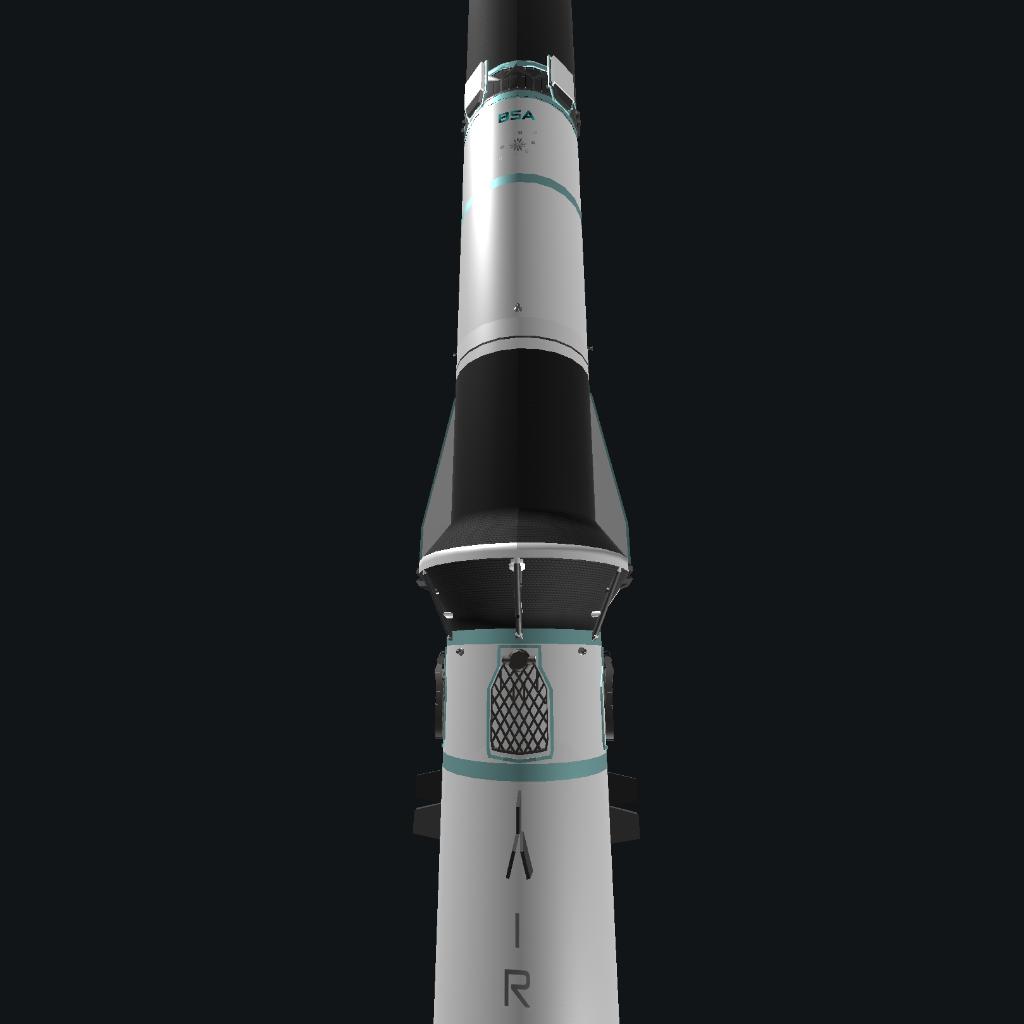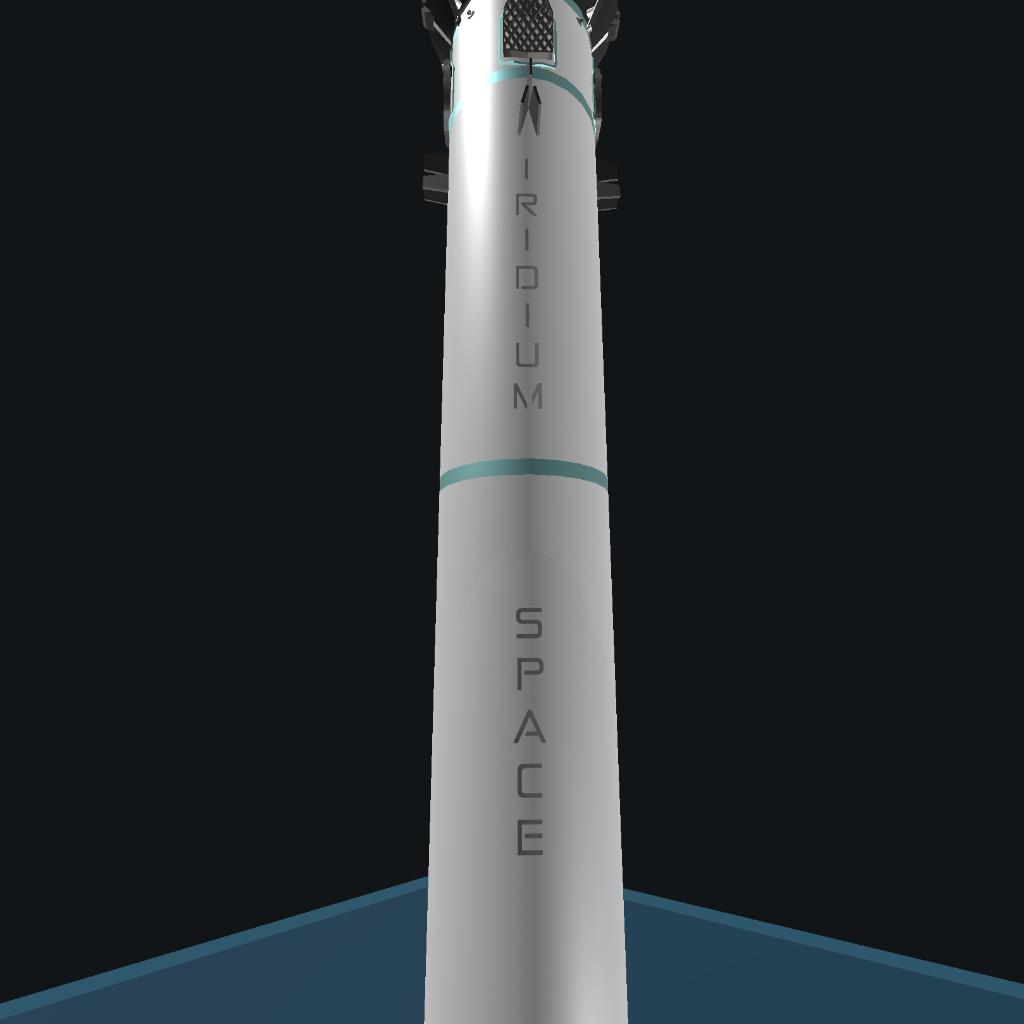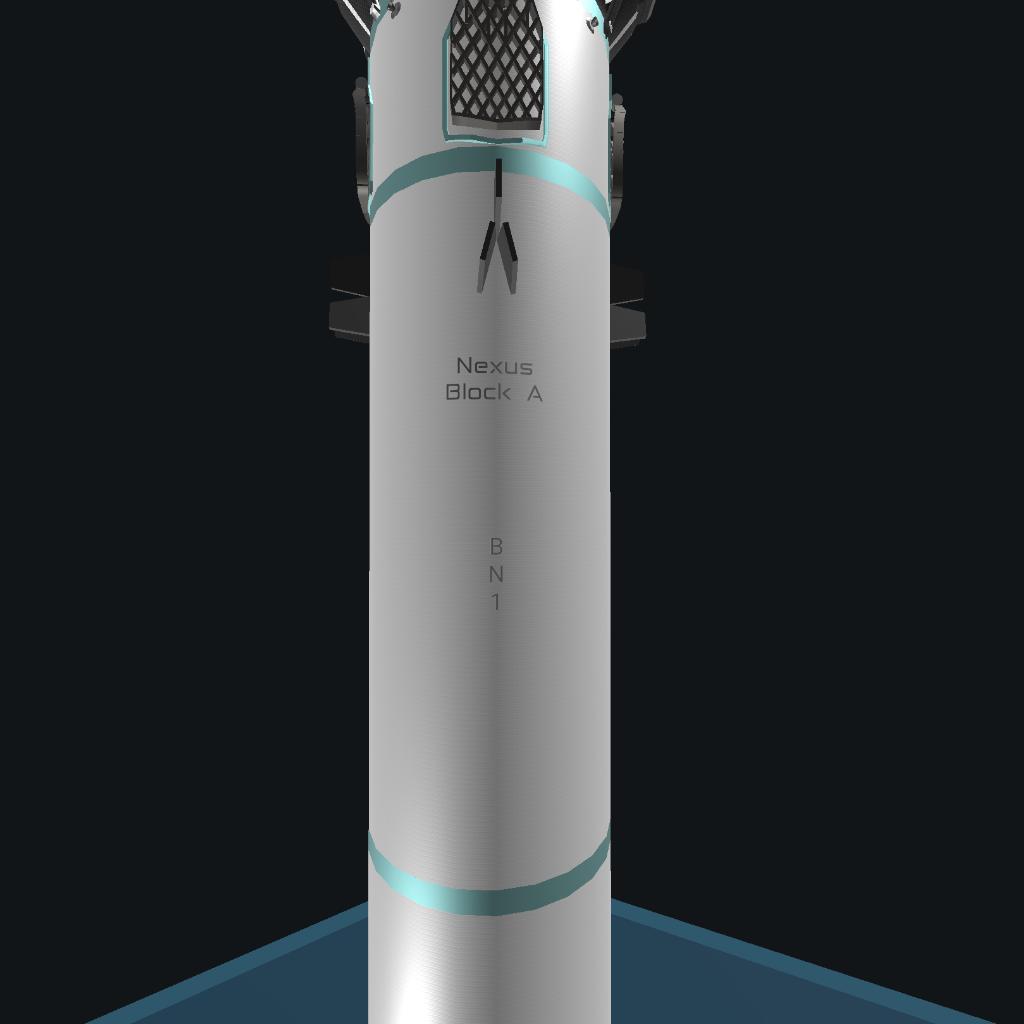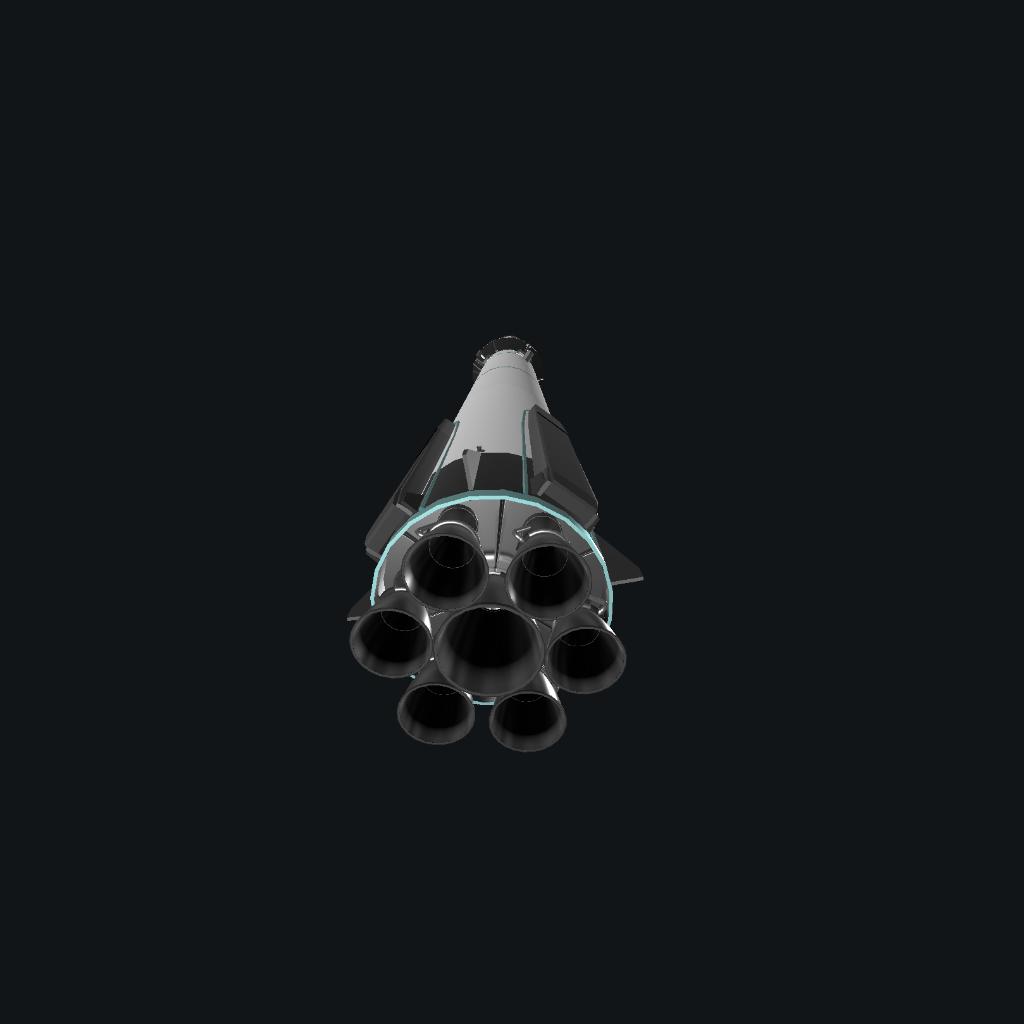After finding @AstroAerospace’s EVO-1 Block 2B (check auto credit, unless it’s bugged), Iridium Space decided to use its design, but adapt it to our technologies. Visually, not much looks different, but performance-wise, much has changed. Iridium Space is using 3d printing carbon composites (hence the 25/35% mass scale) to manufacture Nexus, making it far lighter than anticipated (93 metric tons). Despite its small size and low mass, it can launch 20 metric tons to a circular 35000km orbit in fully reusable mode. The first stage propels the second stage to space, with the outer six sea level engines ignited, and the inner vacuum engine shut down. At ~50km, engine set 2 shuts down and the inner engine ignites. After stage separation (~35% booster fuel), the booster performs a boostback burn and returns to the launch site. During reentry, engine set 2 relights to slow the booster down, and during landing, the inner engine alone is used. After the second stage reaches the intended orbit, the fairings open on hinges before the payload is jettisoned. The fairings close again and the second stage performs a deorbit burn. If possible, it will aim for a body of water close to the launch site. Prior to reentry, the second stage extendable nozzle retracts and six small triangular heat shields extend on arms and merge below the engine. The stage enters heat shield first, with small grid fins correcting the trajectory. After reentey, the fairings open again and a parachute deploys from in between them, and it splashes down in the water.
GENERAL INFO
- Predecessor: EVO-1 [Block-2B] (100% Reusable)
- Successors 1 craft(s)
- Created On: iOS
- Game Version: 1.3.114.0
- Price: $94,481k
- Number of Parts: 1289
- Dimensions: 47 m x 4 m x 4 m
PERFORMANCE
- Total Delta V: 48.2km/s
- Total Thrust: 3.1MN
- Engines: 11
- Wet Mass: 93,949kg
- Dry Mass: 42,490kg
STAGES
| Stage | Engines | Delta V | Thrust | Burn | Mass |
|---|---|---|---|---|---|
| 1 | 7 | 48.2km/s | 2.2MN | 3.3m | 93,949kg |










cool